
Hard bop is a subgenre of jazz that is an extension of bebop music. Journalists and record companies began using the term in the mid-1950s to describe a new current within jazz that incorporated influences from rhythm and blues, gospel music, and blues, especially in saxophone and piano playing.

Horace Ward Martin Tavares Silver was an American jazz pianist, composer, and arranger, particularly in the hard bop style that he helped pioneer in the 1950s.

Horace Parlan was an American pianist and composer known for working in the hard bop and post-bop styles of jazz. In addition to his work as a bandleader Parlan was known for his contributions to the Charles Mingus recordings Mingus Ah Um and Blues & Roots.
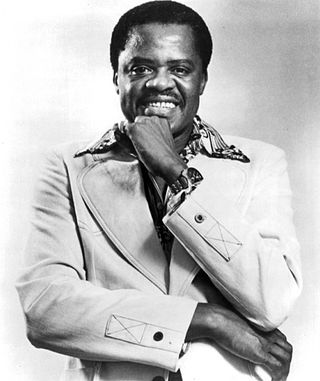
Stanley William Turrentine was an American jazz tenor saxophonist and record producer. He began his career playing R&B for Earl Bostic and later soul jazz recording for the Blue Note label from 1960, touched on jazz fusion during a stint on CTI in the 1970s. He was described by critic Steve Huey as "renowned for his distinctively thick, rippling tone [and] earthy grounding in the blues." In the 1960s Turrentine was married to organist Shirley Scott, with whom he frequently recorded, and he was the younger brother of trumpeter Tommy Turrentine, with whom he also recorded.

Saxophone Colossus is the sixth studio album by American jazz saxophonist Sonny Rollins. Perhaps Rollins's best-known album, it is often considered his breakthrough record. It was recorded monophonically on June 22, 1956, with producer Bob Weinstock and engineer Rudy Van Gelder at the latter's studio in Hackensack, New Jersey. Rollins led a quartet on the album that included pianist Tommy Flanagan, bassist Doug Watkins, and drummer Max Roach. Saxophone Colossus was released by Prestige Records to critical success and helped establish Rollins as a prominent jazz artist.

The Blues and the Abstract Truth is an album by American composer and jazz saxophonist Oliver Nelson recorded in February 1961 for the Impulse! label. It remains Nelson's most acclaimed album and features a lineup of notable musicians: Freddie Hubbard, Eric Dolphy, Bill Evans, Paul Chambers and Roy Haynes. Baritone saxophonist George Barrow does not take solos but remains a key feature in the subtle voicings of Nelson's arrangements. The album is often noted for its unique ensemble arrangements and is frequently identified as a progenitor of Nelson's move towards arranging later in his career.
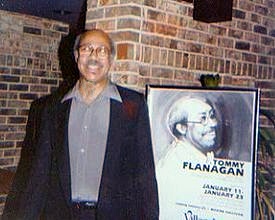
Thomas Lee Flanagan was an American jazz pianist and composer. He grew up in Detroit, initially influenced by such pianists as Art Tatum, Teddy Wilson, and Nat King Cole, and then by bebop musicians. Within months of moving to New York in 1956, he had recorded with Miles Davis and on Sonny Rollins' album Saxophone Colossus. Recordings under various leaders, including Giant Steps of John Coltrane, continued well into 1962, when he became vocalist Ella Fitzgerald's full-time accompanist. He worked with Fitzgerald for three years until 1965, and then in 1968 returned to be her pianist and musical director, this time for a decade.

A Night at Birdland, Vols. 1–3 are three separate but related 10" LPs by the Art Blakey Quintet recorded live at the Birdland jazz club on February 21, 1954 and released on Blue Note Records in July, October and November of that year respectively. The quintet featured Clifford Brown, Lou Donaldson, Horace Silver and Curly Russell. They are considered some of the earliest hard bop recordings.

Art Blakey and the Jazz Messengers is a studio album by Art Blakey and the Jazz Messengers, released in January 1959 by Blue Note Records.

Robert Michael Watson Jr., known professionally as Bobby Watson, is an American saxophonist, composer, and educator.

Eyes of The Heart is a live album by American pianist Keith Jarrett recorded at the Theater am Kornmarkt in Bregenz, Austria in May 1976 and released on ECM in 1979—the last release by Jarrett's "American Quartet", featuring saxophonist Dewey Redman and rhythm section Charlie Haden and Paul Motian.
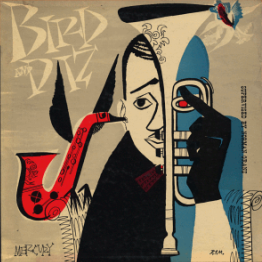
Bird and Diz is a studio album by jazz saxophonist Charlie Parker and trumpeter Dizzy Gillespie. It was recorded primarily on June 6, 1950, in New York City. Two tracks featured on the original pressing, "Passport" and "Visa", were recorded by Parker, without Gillespie and with different personnel than the other tracks, in March and May 1949. The album was originally issued in 1952 in 10" format as a collection of 78 rpm singles on the Verve subsidiary label Clef Records.

Thomas Eugene Turk was an American jazz trombonist.

The Cats is an album by jazz pianist Tommy Flanagan recorded on April 18, 1957 and released in December 1959 on New Jazz, a subsidiary label of Prestige Records. It is credited to Flanagan, saxophonist John Coltrane, guitarist Kenny Burrell, and trumpeter Idrees Sulieman. It was issued after Coltrane's Prestige contract had ended.

Page One is the debut album by American jazz tenor saxophonist Joe Henderson, recorded and released by Blue Note Records in 1963. Henderson is featured in a group with trumpeter Kenny Dorham, pianist McCoy Tyner, bassist Butch Warren and drummer Pete La Roca. The pieces on the album were written by either Henderson or Dorham, and include two pieces that went on to become jazz standards: Henderson’s "Recorda Me" and Dorham’s "Blue Bossa". All of the musicians are listed on the album's front cover with the exception of Tyner, who is credited as "ETC." due to his being signed to rival Impulse! Records.
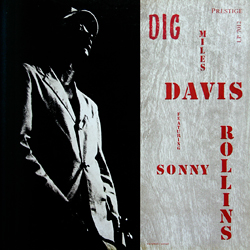
Dig is an album by Miles Davis on Prestige Records, catalogue number 7012. It features tracks from a 1951 session at Apex Studios. First released in the 12-inch LP format in 1956, The original album was later released as Diggin' with the catalogue number PR 7281 and a different cover. Dig was reissued as a compact disc with additional tracks.
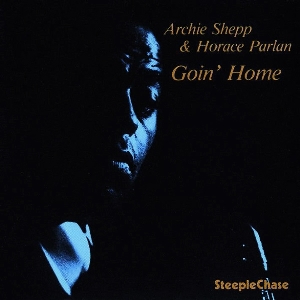
Goin' Home is a studio album by American saxophonist Archie Shepp and pianist Horace Parlan. After their work in the 1960s, Shepp and Parlan both faced career challenges as the jazz scene diverged stylistically. They left the United States for Europe during the 1970s and met each other in Denmark before recording the album on April 25, 1977, at Sweet Silence Studio in Copenhagen.

Bop-Be is the final album on the Impulse label by jazz pianist Keith Jarrett's 'American Quartet'. Originally released in 1978, it features performances by Jarrett, Dewey Redman, Charlie Haden, and Paul Motian. Its tracks were recorded in October 1976, along with those that produced Byablue. These two albums document the swan song of Jarrett's American Quartet and, aside from "classical music", the last albums Jarrett released on a label other than ECM.
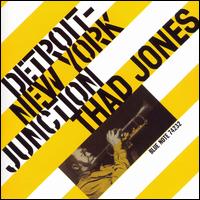
Detroit-New York Junction is an album by American jazz trumpeter Thad Jones featuring performances recorded in 1956 and released on the Blue Note label. The recording session was one of Tommy Flanagan's first recording sessions after he moved to New York City in 1956, and came one day after the pianist played with the same rhythm section for a Blue Note session led by Kenny Burrell.
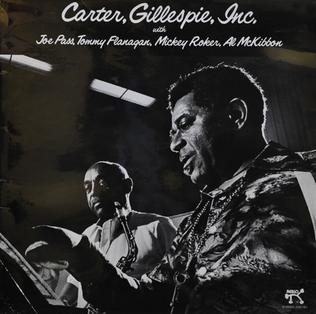
Carter, Gillespie Inc. is an album by saxophonist Benny Carter and trumpeter Dizzy Gillespie recorded in 1976 and released on the Pablo label.




















